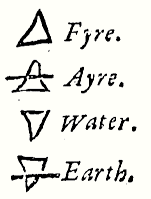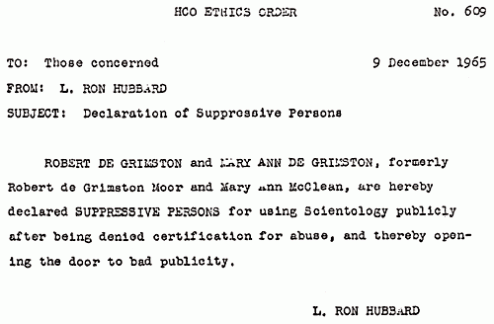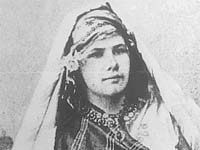This history of mixology is riddled with dubious tales of origin, of outlandish claims made by notable barkeeps, of contradictory accounts. But one notorious cocktail (which, by the way, is technically illegal to serve in several American states due to the fact that it requires the mixing of two liquors in one beverage) about which much is known is the elusive Vesper Lynd.

As with any vintage cocktail, countless variations on this drink have been committed to text over the decades. But the original recipe, created at the Boodle’s gentlemen’s club in London in the early 1950s, is as follows:
2 ounces of Boodle’s gin (originally sold only at the exclusive club of the same name)
1 ounce of Russian vodka
½ ounce of Lillet blanc (an orange liqueur)
These ingredients are to be shaken over ice and strained into a chilled cocktail glass. The glass is then garnished with a lemon twist. The final product is exquisite in both flavor and appearance. The qualities of the cocktail itself, however, are eclipsed in interest by the story surrounding the drink’s popularity. One notable member of the Boodle’s club (along with historical heavyweights such as David Hume, Adam Smith, and Sir Winston Churchill) was author Ian Fleming.

The Boodle's gentlemen's club, founded in 1762, resides at 41-59 Pall Mall in London
He was so taken by the barkeep’s concoction that he featured a version of the recipe is his first James Bond novel, Casino Royale. Bond, in the book, claims to have created the drink, and eventually names it the Vesper. This name derived from his untrustworthy love interest, Russian spy Vesper Lynd (her name being a pun on West Berlin). The mixing of English gin and Russian vodka signified the bond between the two spies. After Bond is betrayed by Lynd, he swears off the cocktail forever.

Although the original 1967 production of Casino Royale was a satirical treatment of the novel starring Peter Sellers as Bond and Ursula Andress as Versper, it was popular enough to place the Vesper martini into the cocktail cannon.

Ursula Andress portraying the double-crossing secret agent
While many cocktails, ranging from the Mai Tai to the Churchill Martini, have excellent histories, the Vesper Lynd is, as far as I know, the only popular cocktail that was born out of the Cold War-Era tension between Capitalist and Communist alliegances.
Some Further Reading:
An interesting look at some different claims made regarding the invention of the Mai Tai
A great look at the history of various martini recipes. Note that this article describes the Vesper as a, “Vodka martini, shaken, not stirred”. This famous line was uttered by Sean Connery in his portrayal of James Bond, and results in a significantly different cocktail than Fleming’s beloved Vesper
This is a meticulously researched book containing recipes, photographs, and the histories of obscure cocktails. I highly recommend it for any mixologist
A brief look at the history of the Boodle’s club
Permalink
2 Comments
“What a piece of work is man. How noble in reason, how infinite in faculties. In form and moving, how express and admirable. In action how like an angel. In apprehension, how like a god. The beauty of the world, the paragon of animals. And yet, to me, what is this quintessence of dust?”
– The Tragedy of Hamlet, Prince of Denmark, Act II, scene ii

Shakespeare's tortured prince weighing the value of mankind.
This dizzyingly rich quotation is familiar to any student of literature, and has become a sort of mantra to those who practice the theatrical art of soliloquy. But what interests me here are not the layers upon layers of meaning that Shakespeare wove using these words, but rather one individual word in particular. That word is quintessence which, as it is used in this context, is defined by the Oxford English Dictionary as “The most typical example of a category or class; the most perfect embodiment of a certain type of person or thing.” But a bit of etymological reasoning leads to more questions than answers. Why would the prefix quint, meaning five, when attached quite literally to the word essence, produce a word synonymous with archetype or apotheosis? What is this mysterious fifth essence that has seemingly sneaked unnoticed into our contemporary lexicon? The answer, it turns out, lies in various ancient philosophies, ranging from the ancient Greeks to the age-old practice of alchemy.

A table of Medieval alchemical symbols.
The practice of alchemy, which combines elements scientific, philosophical, and spiritual, is believed to date back to traditions of the ancient Persian Empire, as early as the 8th century BC. While certain aspects of alchemy bear resemblance to complex spiritual systems such as Kabbalah, its more practical attributes can be seen as a precursor to modern chemistry. Although alchemists practicing in different eras and parts of the world embraced drastically differing systems, one unifying theme running through them all is a concern with physical elements.

The four primary, or Classical, elements are earth, air, fire, and water. This way of dividing the physical world can be found in various ancient cultures. In many traditions, however, there is a fifth element that is considered to be the most important one of all. Known to the Greeks as Aether, the Hindus as Akasha, and the Japanese as void or sky, the notion of a fifth, ethereal element that ties the four physical elements together is pervasive amongst ancient philosophical traditions. It is from the alchemical interpretation of this fifth element, this quinta essentia, that we receive our term signifying an example of perfection. Sometimes referred to as the Philosopher’s Stone, the fifth element is the unity that comes with the mastery of the four lower elements, a whole greater than the sum of its parts. It is just this notion that Shakespeare was evoking when he dubbed man “the quintessence of dust”. After all, even a ghost in the machine, no matter how powerful the spirit and how complex the mechanism, is still a mere ghost in a mere machine. This conclusion was, it seems, one of the weights that made Prince Hamlet’s head so heavy.
Some Further Reading:
The online text of a University of Virginia class focusing on the history of alchemy
An analysis of Hamlet’s “What a piece of work is man…” soliloquy
The entry for lapis philosophorum (the Philosopher’s Stone) from Symbols.com
A site that catalogues the history of chemistry, from alchemy to nanotechnology
Permalink
2 Comments

"Circe Offering the Cup to Odysseus" by John William Waterhouse, depicting the sorceress Circe from Homer's Odyssey
While wandering through the dusty back-alleys of the internet, occasionally one hears whispers of a subject so unspeakably terrifying that it is rarely addressed directly. One such topic, regarding which I have heard mention of countless times during my years as an investigator into the occult but have still found precious little information, is an organization known as the Circe Order of Dog Blood (with Circe sometimes spelled Kirke). Believed to have been active in Southern California and perhaps Ohio during the early 1970s, this alleged Satanic cult has been blamed for, or at least linked to, acts of shuddering violence.

Most references to the Order are brief mentions of its possible association with famed cult leader Charles Manson, pictured above. There is no evidence to suggest, however, that Manson was involved with the Order’s administration. Some sources suggest that a woman identifying herself as Circe (a name harkening to the mythological Greek sorceress who turned men into pigs and surrounded herself with animals) was the central figure of the Order. According to author Adam Gorightly, Circe briefly owned an occult shop in Toledo, Ohio, where she actively accumulated cult members and led them in ritualized dog slaughter. Gorightly hypothesizes that Circe was and alter-ego of Mary Ann DeGrimston, ex-wife of Robert DeGrimston. DeDrimston is notorious for founding and leading of The Process Church of The Final Judgment, an early offshoot of the Church of Scientology. (Ironically enough, one of the Process’ retreat centers in Arizona transformed into the Best Friends Animal Society, a non-profit organization currently dedicated to animal rescue and welfare).

Robert DeGrimston pictured alongside Mary Tyler Moore in literature promoting the Process Church of The Final Judgment
While very little is known about the Circe Order of Dog Blood, it has become something of a scapegoat for unsolved, gruesome crimes committed during the early 1970s. Author Bill Ellis mentions rumors of “Santa Cruz dog-skinners”, who may have been one and the same as the Order, or perhaps the infamous Four Pi Movement, a secret contingency within the Process. One inside source claimed of the Four Pi Movement that:
“The ceremonies involved use of a portable crematorium to dispose of the bodies, a wooden altar adorned with dragons and a wooden morgue table. There were as many as forty people in attendance at these sacrifices. The instrument of sacrifice was a set of 6 knives welded into a football shaped holder. The heart was eaten…”
Ellis goes on to link the Four Pi Movement with:
“…a group called “Kirke [or Circe] Order of Dog Blood.” This group allegedly met on the full and new moons on secluded beaches outside of Los Angeles to sacrifice black animals of all sorts, cats and dogs included.”
These organizations, including the Process and the Manson Family, are allegedly linked through this ritual of drinking animal blood. The Circe Order of Dog Blood, however, may have had the distinction of performing human sacrifice as well. According to Gorightly:
“This mysterious ‘Circe’ also brought property adjacent to a location reported as being a site where satanic rituals involving human sacrifice were performed. In 1985, law enforcement officials dug up the site, discovering ritualistic paraphernalia, although no evidence of murder was uncovered. Shortly before the police raid, the occult shop in Toledo closed and ‘Circe’ disappeared.”
And here, it seems, is where the trail dies. When it comes to scholarly discussion of Circe and her infamous Order, apparently speculation is the best one will find. Whether a sinister cadre that incinerated humans, skinned dogs, and drank blood, or just a suspicious organization with the misfortune of rubbing shoulders with the criminals involved in the Four Pi Movement and the Manson Family, the Circe Order of Dog Blood represents the horrifying fact that humans are capable of cooperating to commit acts of nearly unthinkable ruthlessness under the guise of religious ritual.
Some Further Reading:
A link to text from the book Raising the Devil by Bill Ellis, from which some of the above citations were taken
A blog with useful information about the mysterious Kirke
A site containing extensive writing about the Process Church of the Final Judgment
An article on Serial Killer Central about the Four Pi Movement
A 2008 article about a family dog in Springfield, MO that disappeared, only to be found with its skin and heart removed
An article exploring the Circe of Greek mythology
Here is an image that I couldn’t fit into this article, but I would like to share nonetheless. It shows a letter from Church of Scientology founder L. Ron Hubbard concerning the DeGrimstons:

Permalink
47 Comments
When pondering eras past, is it deceptively easy to reduce an entire culture, time-period, or social movement to a simplified list of customs, events, and personalities. One of Irrational Geographic’s missions is to highlight moments and individuals that have the ability to jar us out of this facile interpretation of history. An exemplary specimen of this is the traveller, hedonist, writer, and all-around iconoclast Isabelle Eberhardt (1877 – 1904).

Growing up in Geneva during the final years of the 19th century, Eberhardt possessed the then unheard-of cultural advantages of having an intellectual, nihilist, former Orthodox priest for a father and an aristocrat with imperial familial connections for a mother. This combination of influences and resources, coupled with an endlessly inquisitive nature, gave her the wherewithal to embrace foreign cultures and languages, and the means with which to pursue these interests through study and travel.

Since women were afforded precious few rights in 19th century Switzerland, Eberhardt augmented her autonomy by dressing as and affecting the mannerisms of a man. This would allow her freedom hitherto unknown to women when she was brought by her mother first to other parts of Europe, and later to northern Africa. Eberhardt’s father encouraged her cross-dressing, and further aided her personal growth by teaching her six languages, cultivating in her an interest in metaphysics, and introducing her to Islam. Eberhardt’s life trajectory was cemented when her family relocated to Algeria and fell in with Arab anti-imperialists.

Upon the death of her mother, Eberhardt was finally afforded the freedom to pursue her passions on her own terms. As she herself put it, “The farther behind I leave the past, the closer I am to forging my own…” Following the death of her father two years later, Eberhardt fully embraced the nomadic lifestyle of Sahara-dwelling Arabs. Her promiscuous tendencies made it well-known that she was biologically a woman, but the Arab community accepted her as a man. She also indulged in the use of drugs and alcohol, despite the fact that these endeavors were prohibited by Saharan custom. In the words of one of Eberhardt’s friends, “She drank more than a Legionnaire, smoked more kif than a hashish addict, and made love for the love of making love.” This highlights the contradictory nature of the hybrid identity that Eberhardt managed to establish.

Despite the apparent ambiguity of her cultural allegiances, Eberhardt was spiritually committed to, and fully accepted by, the secretive Sufi sect (even becoming a close friend of the sect’s spiritual leader), which seemed to turn a blind eye to her decadent lifestyle. Eberhardt also managed to marry and Arab soldier named Slimene Ehnni, who apparently tolerated her notorious promiscuity. Herein lies the intriguing mystery of Isabelle Eberhardt. She was a European-born white woman who lived freely in the Arab world as a man (assuming the masculine name Si Mahmoud Essadi), openly using drugs and alcohol while a devoted member of a temperant sect, and maintaing a marriage with an Arab man while still freely exploring her sexuality. She was a woman of contradictions who redefined the world in which she lived.

It seems fitting, then, that even in death she was an iconoclast. Eberhardt once wrote that, “Death does not frighten me, but dying obscurely and above all uselessly does.” The universe was seemingly ignorant of, or humorously invested in, this sentiment when, on October 1 of 1904, the 27-year-old Eberhardt, while recovering form a bout of malaria, perished in a flash flood in the Ain Sefra municipality of Algeria. This death could not, it seems, have been any more obscure or useless.

While relatively unknown during her lifetime, Eberhardt’s writings have received some posthumous attention. Several journals and one novel, penned by Eberhardt during her travels, give contemporary readers a glimpse into the unique life of a cross-dressing, hedonistic, European woman living happily in the orthodox climate of turn-of-the-century northern Africa. Several essays, linked below, explore many intriguing facets of Eberhardt’s life and adventures.
Some Further Reading:
A succinct biography
An interesting article exploring the unconventional nature of her life
A site that discusses Eberhardt’s writings
A brief collection of quotes attributed to Eberhardt
Permalink
4 Comments
It is not uncommon for a specialized vocabulary to be spoken amongst members of a group united by profession. Sailors, soldiers, actors, and doctors all regularly speak words and phrases that are rarely, if ever, used by lay people. But only seldom throughout history does one find groups of people among whom nuanced and extensive systems of secretive slang, known as cants, have emerged. One of my favorite such bodies of slang is the cant, known as Ciazarn, spoken by American carnival workers (carnies), during the first half of the 20th century.

The word Ciazarn itself (pronounced KEY-uh-zarn) illustrates the mechanics of this cant. In order to convert a normal word into Ciazarn, extra syllables, usually consisting of i, a, and z sounds, are added into the middle of the word. Carny becomes key-uh-ZAR-nee, hence the name of the cant. Another example is the word gimmick which, in Ciazarn, is pronounced as gee-ya-ZIM-ick. The rules of this cant are simple enough, but when spoken rapidly it allowed carnies to openly converse with one another without being understood by the carnival patrons. When coupled with an extensive vocabulary of additional slang terms, this linguistic contortion allowed the carnies to easily collude in bilking rubes.
It should be noted that some contemporary hip-hop slang follows similar guidelines. In the early 21st century, rappers Snoop Dogg and Jay Z popularized the insertion of “izzle” into the middle of words. Perhaps the most well-known example of this is the phrase “fo shizzle”, which is a modified version of “for sure”. This is very close to the Ciazarn version of the phrase, which would have been pronounced “for SHE-uh-zor”. Another popular cant used in modern English is Pig Latin, which follows a distinct yet similarly simple set of rules for word alteration. Pig Latin differs in that it requires a rearrangement of the word’s vowels with an “ay” sound added on the end, “sure” being pronounced “uhr-shay”,
See-uh-zum Fee-uh-zurther Re-uh-zeading:
A remarkably extensive dictionary of Carny slang (I respectfully draw your attention to “geek”, “half-and-half”, and “raghead”)
An article about Parlyaree, a cant spoken among members of the British gay subculture during the 1950s and 1960s (some of the phrases remind me of Anthony Burgess’ Nadsat, mentioned in a previous entry)
A compendium of Vaudeville slang that is certainly worth reading
A list of various cants, along with links to articles about them
Permalink
Leave a Comment

















